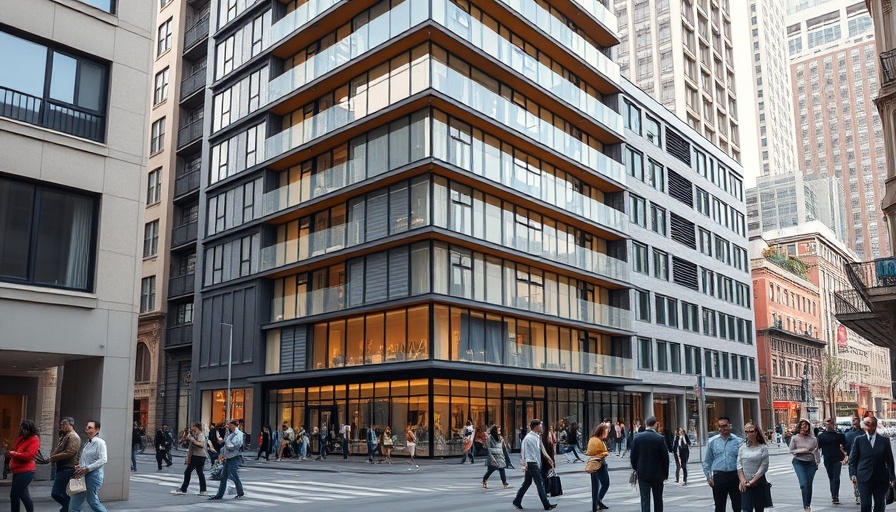
A New Chapter for Amoeba Music: Berkeley's Vinyl Hub Transformed
Exciting developments are on the horizon for Amoeba Music, an iconic cultural landmark in Berkeley. Plans are underway to erect an eight-story apartment building atop the beloved store’s original location at 2455 Telegraph Ave. Co-owners Dave Prinz and Marc Weinstein are finalizing these ambitious designs, aiming to blend residential life with Berkeley's vibrant music scene.
Community Concerns: Balancing Growth and Culture
As the Bay Area grapples with a housing crisis, the proposal to add residential space above Amoeba raises vital conversations about urban development. Neighbors and city officials are keen to ensure that additions do not overshadow the cultural significance of Amoeba Music, known for its extensive vinyl collection and as a gathering space for music lovers. Exploration of community perspectives indicates a strong desire to maintain the store's unique atmosphere while accommodating the increasing demand for housing.
The Importance of Cultural Landmarks in Urban Development
This initiative taps into broader trends in urban planning, where cities aim to integrate residential and commercial spaces.
Similar projects across the U.S. have sought to revitalize neighborhoods by building above popular venues. This model not only helps alleviate housing shortages but also seeks to foster a flourishing cultural environment. The balance between preserving historical landmarks while innovating urban landscapes is a delicate dance that proponents and critics of this project frequently discuss.
Future Predictions: Where Will Berkeley Head Next?
As Berkeley looks toward a future shaped by this building project, city planners anticipate a shift not only in housing availability but also in communal interactions. Integrating living spaces above local retailers may soon transform how residents experience their community. Such innovations aim not just to house more people, but to reinvigorate local economies and encourage local engagement.
Decision-Making Insights for Residents
For those living in or around the Bay Area, it's essential to consider how these changes might affect neighborhoods. Increased density can result in better public transport options and greater interactions between community members, yet it is crucial to stay informed and engage with planners to advocate for preserved cultural spaces like Amoeba Music.
Frequently Asked Questions About Urban Development in Berkeley
What types of apartments are planned for the space?
While specifics around the design and layout are still being finalized, initial plans indicate a mix of units aimed primarily at young professionals and families.
How will these developments impact local businesses?
Local business owners express a mix of excitement and trepidation. Increased foot traffic from residents could benefit surrounding shops, provided that the cultural essence of the area remains intact.
Cultural Significance: What Does Amoeba Music Represent?
Amoeba Music serves not just as a store but as a cultural landmark representing Berkeley's eclectic spirit. Its expansive selection of vinyl records appeals to various demographics, uniting diverse music lovers. The store hosts live music events, fostering connections and shared experiences among patrons, which is crucial for preserving Berkeley's identity amidst rapid urbanization.
The impending construction atop Amoeba Music demonstrates the challenges and opportunities faced by urban areas like Berkeley, where housing needs clash with community identity. As the city prepares for this significant alteration, residents are called upon to engage in the dialogue surrounding development and preservation.
Understanding these changes enhances our ability to navigate an evolving landscape, making it crucial to stay connected and informed about local developments.
 Add Row
Add Row  Add
Add 




Write A Comment